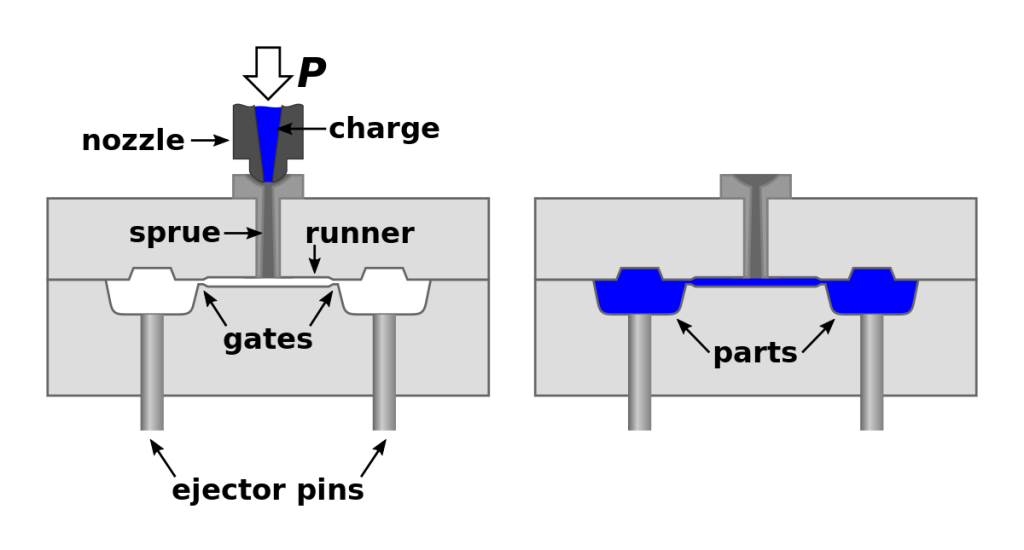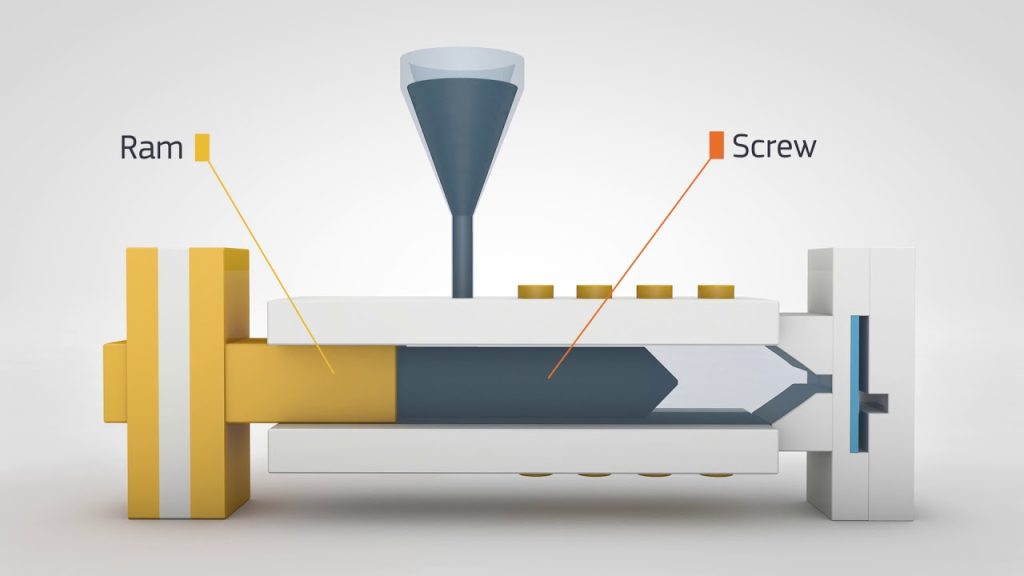Injection molding is a widely used manufacturing process that involves injecting molten plastic into a mold to create a desired shape or product. However, the process doesn’t end with the injection of plastic; cooling time is just as crucial to ensuring a successful final product.
Cooling time refers to the amount of time it takes for the molten plastic to completely solidify and cool within the mold. This process is essential to prevent deformation, warping, or other defects that can compromise the quality of the finished product. In this article, we will explore what cooling time is in injection molding and why it is so important for achieving high-quality results.
Understanding Cooling Time in Injection Molding
Injection molding is a popular manufacturing process used to create plastic parts for a wide range of applications. During this process, molten plastic is injected into a mold, where it cools and solidifies before being ejected as a finished product. One of the most critical aspects of injection molding is cooling time. In this article, we will discuss what cooling time is and why it is essential for the success of injection molding.
What is Cooling Time in Injection Molding?
Cooling time is the period between the injection of molten plastic into the mold and the point at which the part is cool enough to be removed from the mold. During this time, the plastic undergoes a phase change from a liquid to a solid state. The cooling time varies depending on the size and shape of the part, the type of plastic material used, and the temperature of the mold.
The cooling time is a crucial parameter in the injection molding process as it directly affects the quality and dimensional accuracy of the final product. If the cooling time is too short, the part may not have enough time to solidify completely, leading to deformation or warping. On the other hand, if the cooling time is too long, it may increase the cycle time, which can result in decreased productivity and increased manufacturing costs.
Factors Affecting Cooling Time
Several factors can influence the cooling time in injection molding. Let’s take a closer look at some of the critical factors below:
Part Size and Complexity
The size and complexity of the part play a vital role in determining the cooling time in injection molding. Larger and more complex parts require longer cooling times to ensure that the plastic has solidified entirely.
Plastic Material
The type of plastic material used in injection molding can also affect the cooling time. Different materials have different melting and cooling temperatures, which can influence the time required for the plastic to solidify.
Mold Temperature
The temperature of the mold also plays a crucial role in determining the cooling time. The mold needs to be kept at a specific temperature to ensure that the plastic cools uniformly and solidifies correctly.
Cooling System
The cooling system used in the injection molding process can also affect the cooling time. An efficient and well-designed cooling system can reduce the cooling time and improve the overall quality of the final product.
Benefits of Optimal Cooling Time
Optimizing the cooling time in injection molding can offer several benefits, such as:
Improved Product Quality
Optimizing the cooling time can help improve the quality of the final product by reducing the risk of defects such as warping, deformation, or cracking.
Increase in Production Efficiency
Optimizing the cooling time can also help increase production efficiency by reducing the cycle time required for each part, resulting in higher productivity and lower manufacturing costs.
Better Mold Life
Optimizing the cooling time can also help increase the lifespan of the mold by reducing the stress and wear caused by rapid temperature changes.
Cooling Time vs. Cycle Time
It is essential to note that cooling time and cycle time are not the same things. Cooling time is only one of the parameters that affect the cycle time, which includes other factors such as injection time, packing time, and ejection time.
While optimizing the cooling time can help reduce the cycle time, it is not always the most critical factor. It is essential to balance all the parameters to ensure the best possible outcome for the injection molding process.
Conclusion
In conclusion, the cooling time is a critical parameter in the injection molding process that directly affects the quality and dimensional accuracy of the final product. By optimizing the cooling time, manufacturers can improve the efficiency and productivity of the injection molding process while reducing manufacturing costs and improving the quality of the final product.
Frequently Asked Questions
Here are some common questions and answers regarding “What is Cooling Time in Injection Molding?”
What is Cooling Time in Injection Molding?
Cooling time is a crucial stage in the injection molding process. It is the period of time between the filling of the mold cavity with molten plastic and the opening of the mold to release the part. During this stage, the plastic solidifies and cools down to the point where it can be handled and removed from the mold without deformation. The cooling time varies depending on the shape and size of the part, the type of plastic used, and the mold temperature.
Shorter cooling times can lead to higher productivity but may result in defects such as warping, sink marks, and residual stresses. Longer cooling times can help reduce these defects but can also lead to longer cycle times and lower productivity.
How is Cooling Time Determined?
Cooling time is determined by the thermal properties of the plastic, the geometry of the part, and the mold temperature. The cooling time can be calculated using simulation software, which takes into account these factors and predicts the time required for the plastic to cool and solidify. Alternatively, empirical methods can be used, where the cooling time is determined by trial and error through the use of test molds and physical tests on the parts.
The optimum cooling time is the one that achieves the desired part quality while minimizing cycle time and maximizing productivity. This can be achieved through a combination of simulation, empirical methods, and experience.
What are the Effects of Cooling Time on Part Quality?
The cooling time has a significant impact on part quality. If the cooling time is too short, the plastic may not have enough time to solidify and can result in defects such as warping, sink marks, and residual stresses. If the cooling time is too long, the part may become over-cooled, leading to brittleness and reduced mechanical properties.
The ideal cooling time is the one that achieves the desired part quality while maintaining productivity. This can be achieved through simulation, empirical methods, and experience. It is essential to balance the cooling time with other factors such as mold temperature, part geometry, and plastic properties.
How Can Cooling Time be Optimized?
Cooling time can be optimized by adjusting the mold temperature, part geometry, and plastic properties. The mold temperature can be adjusted to achieve the desired cooling rate and minimize defects. The part geometry can be optimized to reduce the thickness of the plastic and promote faster cooling. The plastic properties can be adjusted by using additives or changing the composition to improve cooling and reduce defects.
In addition, simulation software can be used to predict the optimum cooling time and identify areas of the part that may require additional cooling. Empirical methods can also be used to fine-tune the cooling time by using test molds and physical tests on the parts.
What are the Consequences of Poor Cooling Time Control?
Poor cooling time control can lead to a variety of defects and quality issues in the parts produced. These defects can include warping, sink marks, residual stresses, and reduced mechanical properties. In addition, poor cooling time control can lead to longer cycle times, reduced productivity, and increased costs.
To avoid these consequences, it is important to optimize the cooling time and maintain good control over the cooling process. This can be achieved through a combination of simulation, empirical methods, and experience.
In conclusion, cooling time plays a critical role in the injection molding process. It is the length of time that the molten plastic spends in the mold before it solidifies. Cooling time is determined by several factors, including the properties of the plastic, the design of the mold, and the temperature of the mold.
A proper cooling time ensures that the plastic is solidified and can be ejected from the mold without any deformation or damage. If the cooling time is too short, the plastic may not solidify completely, resulting in a defective product. On the other hand, if the cooling time is too long, it may increase production time and costs.
Therefore, it is essential to optimize the cooling time for each injection molding project to achieve the desired quality and quantity of the products. By understanding the factors that affect cooling time, injection molding manufacturers can improve their processes and create high-quality products efficiently.
Request a quote today!
[contact-form-7 id="1578" title="Contact form"]
Please compress the file into a ZIP or RAR file before uploading. Alternatively, send through your RFQ by email.
enquires@unitymanufacture.com





